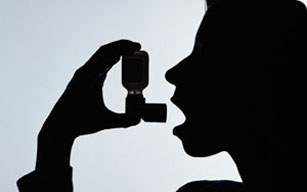 Vaccinating adolescents on time means healthier children, families and communities. Regulations for school attendance require schools to more closely examine students’ immunization records and could result in adolescents not being allowed to start or continue in school if immunizations are not current. These updated regulations provide increased protection against illnesses like whooping cough, which has been reported in school aged children in Westchester, as well as cases of measles and mumps that have occurred in the area.
Vaccinating adolescents on time means healthier children, families and communities. Regulations for school attendance require schools to more closely examine students’ immunization records and could result in adolescents not being allowed to start or continue in school if immunizations are not current. These updated regulations provide increased protection against illnesses like whooping cough, which has been reported in school aged children in Westchester, as well as cases of measles and mumps that have occurred in the area.
As your children become preteens or teenagers, ask their doctor about the HPV vaccine, which protects against some cancers, the Tdap vaccine, which is a booster against tetanus, diphtheria and pertussis, and the meningococcal vaccine, which protects against meningococcal disease. If your older teen never got the meningococcal vaccine, ask about getting it now, especially if your teenager is about to move into a college dorm.
Take the childhood vaccine quiz to get a customized printout of recommended vaccines.
Harm in delaying or skipping vaccinations
In recent years, there has been a lot of misinformation in the media and on the internet about vaccinations. This has caused some parents to worry that vaccines could cause autism in their children. Unfortunately, this mistaken belief has led many parents to delay or even refuse vaccinations for their children. As a result, outbreaks of vaccine preventable diseases are occurring in communities where vaccination rates are low, both here in the United State and around the world. Without vaccines, children are at risk of developing dangerous, even deadly diseases, such as measles, mumps, whooping cough and the flu. For more information about the dangers of not getting vaccinated, visit the New York State Department of Health.
 Asthma is a chronic inflammatory disease of the airways. In the US, over 25 million people suffer from asthma. About 7 million of these people are children.
Asthma is a chronic inflammatory disease of the airways. In the US, over 25 million people suffer from asthma. About 7 million of these people are children.
Asthma is a disease that causes severe attacks of wheezing and coughing. Although asthma cannot always be prevented, it can be controlled with the right medicine and information.
Signs of Asthma
If your child has any of the following problems, he or she may have asthma.
- Wheezing that begins suddenly, may be worse at night or in early morning or may get worse when exposed to cold air
- Coughing
- Chest tightness or pain
- Shortness of breath
- Excess mucus
Other symptoms that are sometimes linked with asthma may include stuffy or runny nose, sinus problems or nasal polyps (growths inside the nose).
Asthma Triggers
Everyday life is filled with the allergens that can kick off an asthma attack. Some of the more common factors or triggers are:
- Allergic reactions from pollens, feathers, molds, animals, some foods, house dust
- Emotional stress/excitement, fear or laughter
- Vigorous exercise, especially when it leads to overexertion or in cold weather
- Cold air, wind, rain or sudden changes in the weather
- Occupational dusts and vapors
- Air pollution. Look at today's air quality maps to see the levels of air pollution in your area.
- Sleep (nocturnal asthma)
Diagnosing and Treating Asthma
Diagnosing asthma is based on a physical examination and a personal history. The personal history will include any history of breathing problems you may have had, as well as a family history of asthma, allergies, eczema or other lung disease. It is important that you describe your symptoms in detail (coughing, wheezing, shortness of breath, chest tightness), including when and how often these have been occurring.
A physical examination looks for signs of wheezing, shortness of breath, or coughing. Tests such as chest x-rays and pulmonary function tests may be done to confirm your diagnosis.
If you are diagnosed with asthma, you can avoid having an attack by taking your medicine exactly as your doctor says and by avoiding your asthma triggers. Creating your own Asthma Action Plan can help manage you or your child’s asthma in a way that best works for you!
Allergies
The most common allergic conditions:
- Allergic rhinitis (hay fever) describes the lining of the nose when it becomes inflamed (red and swollen). People with this condition usually complain of an itchy, stuffy or drippy nose, a scratchy throat, and coughing. Persistent sneezing, coughing, and an itchy throat may be signs of allergic rhinitis.
- Allergic Conjunctivitis is an allergic reaction on the surface of the eyes and eyelids caused by allergens. Itching is the most common symptom although other symptoms include redness, tearing, swelling, burning or a sensation of fullness in the eyes or eyelids, an urge to rub the eyes, sensitivity to light and occasionally blurred vision.
- Urticaria (hives) is the medical word for hives. Hives, or "wheals", are pale red swellings of skin that occur in groups on any part of the skin. Each hive lasts a few hours before fading without a trace. New areas may develop as old areas fade. They can vary in size from as small as a pencil eraser to as large as a dinner plate and may join together to form larger swellings. Hives usually are itchy, but may also burn or sting.
- Atopic Dermatitis (eczema) is a chronic skin disorder categorized by scaly and itching rashes. People with eczema often have a family history of allergic conditions like asthma, hay fever or eczema.
- Allergens are substances that normally cause allergies, such as pollen from grasses, trees, and weeds, animal dander, dust mites, cockroaches, air pollutants (dust, smog, tobacco smoke, wood smoke), strong sprays from perfumes, paints, household cleaners, talcum powder and chalk dust.
Resources:
The Beach Surveillance Program protects the public from illnesses associated with swimming in contaminated bathing waters.
Beaches are generally open Memorial Day through Labor Day. To find out if a particular beach is open for the season, check the public and private beaches page for the phone number of the beach you're interested in.
Public health-related beach closings on Monday through Friday are available here. For information on weekend beach closures check with the beach itself.
June 20, 2025
The following beaches must remain closed until further notice due to the continued presence of a Harmful Algae Bloom in the swim areas.
- Mohegan Colony Association Mohegan Lake
- Mohegan Beach Park District Mohegan Lake
Beaches are sometimes closed due to excessive rainfall
Based on studies by the Westchester County Department of Health, heavy rainfalls in the watershed of the Mamaroneck River greatly impact the quality of water in the Mamaroneck Harbor. Echo Bay in New Rochelle is similarly affected impacting Hudson Park Beach and Echo Bay Yacht Club.
Beach closures are based on the number of inches of rain on the watershed. Heavy rains and discharges from stormwater drains directly affect these waters. As a result, these waters may contain high levels of harmful bacteria that may cause illness after a heavy rain.
Threshold levels have been established to promote a guide for the closing of beaches located within the protected area of these harbors.
- Greater than 1/2 inch of rain = 1 day closure
- Greater than 1 inch of rain = 2 day closure
- Greater than 2 inches of rain = to be determined
If you plan on going to any of these beaches after a rainfall, check to make sure they are open by calling the beach.
Beaches within Mamaroneck Harbor
- Harbor Island
- Beach Point Club
- Mamaroneck Beach and Yacht Club
- Orienta Beach Club
Beaches on open water in Rye
- Coveleigh Club
Beaches in Davenport Neck, New Rochelle
- Davenport Club
- Greentree Club
- Surf Club
Beaches within Echo Bay, New Rochelle
- Hudson Park Beach
 A child can fall victim to bacteria and viruses that cause serious disease. You can provide the best protection for your child by following the recommended immunization schedule. It is important that children receive all of their vaccines on time. You can check the schedule for the age or age range when each vaccine or series of shots is recommended. Talk with your child's healthcare provider about the use of combination vaccines to reduce the number of injections needed.
A child can fall victim to bacteria and viruses that cause serious disease. You can provide the best protection for your child by following the recommended immunization schedule. It is important that children receive all of their vaccines on time. You can check the schedule for the age or age range when each vaccine or series of shots is recommended. Talk with your child's healthcare provider about the use of combination vaccines to reduce the number of injections needed.
Take the childhood vaccine quiz to get a customized printout of recommended vaccines.
Harm in delaying or skipping vaccinations
In recent years, there has been a lot of misinformation in the media and on the internet about vaccinations. This has caused some parents to worry that vaccines could cause autism in their children. Unfortunately, this mistaken belief has led many parents to delay or even refuse vaccinations for their children. As a result, outbreaks of vaccine preventable diseases are occurring in communities where vaccination rates are low, both here in the United State and around the world. Without vaccines, children are at risk of developing dangerous, even deadly diseases, such as measles, mumps, whooping cough and the flu. For more information about the dangers of not getting vaccinated, visit the New York State Department of Health.
Pediatricians answer vaccine questions
Parents have many questions about the vaccines their children need. To answer these questions, the American Academy of Pediatrics (AAP) Sound Advice Web page features a collection of audio interviews with pediatricians, researchers, advocates and other parents.

Convenient plastic products can be harmful to your family's health.
If you are a parent of a young child or are expecting a baby, then you need to know about the dangers of “everywhere chemicals.”
Bisphenol-A (commonly known as BPA) and phthalates, which are called “everywhere chemicals” because they are so common, are used in making countless plastic products that we see and use everyday. This includes children’s items such as baby bottles, sippy cups, pacifiers and teethers.
BPA is used in hard, clear plastic, like baby bottles. Phthalates help make plastic, like pacifiers, flexible. It is believed that both BPA and phthalates can leach from plastic into food, liquid, and directly into the mouths of children while sucking on pacifiers or teethers.
Growing scientific evidence suggests BPA and phthalates may be associated with a variety of health issues, including hormonal and developmental problems. Infants and young children, who are vulnerable during early developmental years, are likely to be at potentially most risk from exposure to “everywhere chemicals” such as BPA and phthalates.
What is Bisphenol-A (BPA)?
BPA is used to make polycarbonate plastic, a shatter-resistant and clear material used in products ranging from plastic bottles and eyeglasses to sports safety equipment. BPA is also found in baby bottles, sippy cups, teethers, water bottles, food storage containers, and the lining of many food and beverage cans.
What are Phthalates?
Pronounced “THAL-ates,” phthalates make plastic soft and flexible, and are often found in car interiors, shower curtains, deodorant, cosmetics, and medical devices. Phthalates can also be found in children’s products such as toys, rattles, teethers, rubber ducks, bath books, baby shampoo, soap and lotion.
Why be worried about BPA and Phthalates?
BPA can leach from plastic containers into foods and beverages, especially when they are heated, or used for long periods of time. Also, when kids put toys, teethers, and other products that contain phthalates in their mouths, the chemical may leach from the product to the child.
Animal studies have shown that exposure to BPA can have developmental effects. There are no studies that show that BPA is associated with adverse effects in human development. However, because developmental effects in animals occur at BPA exposures close to those experienced by some people, the possibility that BPA may alter human development cannot be dismissed. In laboratory animals, exposure to high levels of BPA has been associated with adverse effects on reproduction. Some human studies suggest a possible effect of BPA on reproductive hormones, especially in men exposed to high levels in the workplace, but human data are not sufficient to determine if BPA adversely affects reproduction.
Animal studies have associated phthalate exposure with adverse effects on the liver, kidney, and male and female reproductive system, especially when exposures occur to the developing organism. For example, animals exposed to phthalates in the mother’s womb have shown decreased sperm activity and concentration, early puberty in females, and testicular cancer. Possible reproductive, developmental and other effects of phthalates in humans are the subject of much ongoing research. Phthalates have been detected in humans, but associations between the levels of phthalates found and effects in humans is currently inconclusive.
Tips to minimize exposure to BPA and Phthalates:
- Use refillable glass, porcelain and stainless-steel containers for food and beverages, particularly for hot foods and liquids.
- When you have something plastic, look at the little triangle on the bottom of the container. Avoiding plastic containers marked with a 1 or a 7 pc and instead choosing those marked with a 2, 4, or 5 will reduce the likelihood of exposure to BPA and phthalates.
- Glass baby bottles are recommended for babies who don't yet feed themselves.
- For bottle feeding, since latex rubber nipples may contain phthalates, use of silicone nipples may reduce phthalate exposure.
- Do not use plastic containers in microwaves.
- To minimize exposure to phthalates, avoid vinyl toys, perfumed shampoo and lotion. Choose fragrance-free products whenever possible.
- Companies are now making baby bottles, food containers, teethers, shampoo, lotions, and other children’s items that are "BPA-free" and/or "phthalate-free.” Always read the package label or check with the manufacturer to know what you are bringing into your home.
For more information on Bisphenol-A and Phthalates visit:
